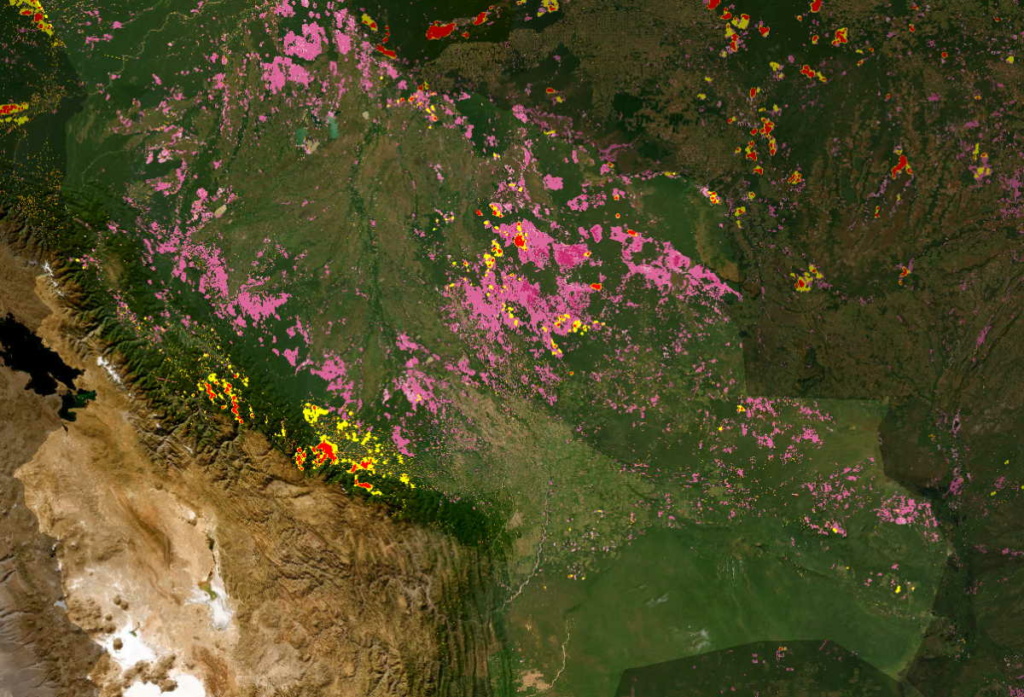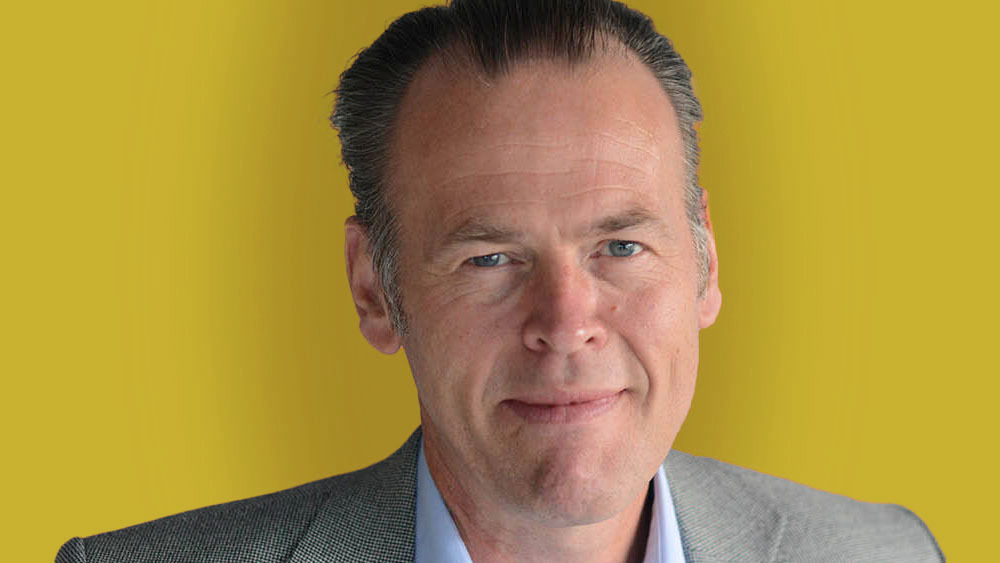Your cart is currently empty!

Software technology trainees help WWF-NL detect deforestation
To prevent forests from being cut down illegally, WWF-NL has developed an AI-driven early warning tool called Forest Foresight. EngD students from Eindhoven University of Technology helped improve the software quality and create an open-source community.
The lungs of our planet are under threat. To make room for agriculture and poorly planned infrastructure, 90,000 square kilometers of trees are cut down each year, an area the size of Portugal. This deforestation not only decimates the habitats of more than 100,000 species of animals, but it also disrupts the livelihood of millions of people by changing precipitation patterns, inducing erosion and causing floods. At the same time, the loss of trees deprives us of valuable carbon sinks that mitigate climate change. To add insult to injury, deforestation-related activities annually produce 6.7 billion tonnes of CO2, equivalent to the emissions of the whole US.
The good news is that there are already several deforestation alert systems operating internationally, based on radar and optical images from ESA’s Sentinel satellites and optical images from NASA’s Landsat-8. The bad news is that they can only detect occurrences after the fact, when it’s too late. To halt illegal deforestation even before it begins, the World Wide Fund for Nature Netherlands (WWF-NL) offers an AI-driven online tool called Forest Foresight. Originally created six years ago, it’s been further developed in collaboration with several partners, including Wageningen University & Research. The tool is already being used in Indonesia (Kalimantan), Laos, Gabon, Colombia, Bolivia and Peru.

Forest Foresight collects geo data and satellite imagery from a multitude of sources and feeds them to an advanced machine learning model that can predict forest loss. From the beginnings of new roads or increased human activity, for example, it can conclude that nearby woodlands are in jeopardy. These learnings are translated into forest risk maps with a resolution of roughly 400 by 400 square meters that enable (local) stakeholders to spot changes and intervene in time – before irreversible damage is done.
From the cloud to R
“We’re using this machine learning model called XGBoost,” explains Jonas van Duijvenbode, product owner of Forest Foresight at WWF-NL. “We train it on seventy data sets, ranging from very static to updated regularly, containing details such as past deforestation alerts, known roads, the presence of deforestation-prone settlers and an area’s fire intensity rating. This results in predictions for the entire pantropical belt, 30 degrees north to 30 degrees south latitudes, of where forests will be cut down in the next six months.”
When Van Duijvenbode joined WWF-NL two years ago, Forest Foresight was being developed and run in an extensive but inflexible and costly cloud environment. On his recommendation, it was decided that the tool was to be migrated to an open-source application. “We wanted a more flexible solution, one that could be more easily maintained by a larger group of people and more easily integrated into the workflow of our partners in the field. Also, we wanted to increase the accuracy by downsampling the resolution, which we could do more efficiently outside the cloud,” recalls Van Duijvenbode. “Having to do most of the work myself, I chose to rewrite the software in R because that was the programming language I was most familiar with. I had some coding experience in Python as well, but I found installing the accompanying environment to be too much of a hassle. Another advantage of R is the Terra package, which provides extremely useful tools for spatial data analysis.”
With his background in spatial planning, geo-information science and remote sensing, Van Duijvenbode is far from a professional programmer, so the resulting software in R left a lot to be desired. “I realized that for the code to be up to par and acceptable for the open-source community, I needed help. The Forest Foresight implementation officer happened to know someone at Eindhoven University of Technology, who put us in contact with their EngD Software Technology program.”

Positive impact
TU/e’s EngD ST is a two-year salaried post-master technological designer program on a doctorate level for top MSc graduates with a degree in computer science or a related field. It prepares them for a career in industry by strengthening their theoretical basis and confronting them with challenging real-world problems. The students learn to develop innovative solutions meeting industry standards while mastering all the aspects of teamwork, different roles and professional skills.
“WWF-NL is a dream client,” notes ST program director Yanja Dajsuren. “Sustainability is on top of our list and after having done a wide range of projects with industrial partners, we’ve been wanting to work with a non-governmental organization for some time. The WWF-NL assignment is the perfect combination. It’s been an incredibly inspiring experience for our trainees to be able to make a positive contribution to a noble cause like the fight against climate change. Thanks to Jonas and his team, we now know that software developers can play their part there as well.”
ST trainees Maas van Apeldoorn, Amin Bakhshi and Hasrul Maruf set out to tackle the Forest Foresight challenge as the last of the three in-house projects in their first year of the program. From kickoff to final presentation, the assignment took a little over nine weeks. “I’d been pushing for months to do a project with a positive impact,” says Van Apeldoorn. “I’m really happy we got this.”
Quirks of R
Already when they installed and tried out the tool for the first time, the trainees knew they had their work cut out for them. “Let’s just say that it didn’t go without hiccups,” acknowledges Van Apeldoorn, who acted as the product owner of the project. “When we dug through the code, it became even more apparent that Jonas doesn’t have a background in software engineering. He knows how to make something that works, but building something robust and easy to understand and maintain by someone else is quite another beast. Luckily, he didn’t mind us criticizing his baby at all. He was very open to feedback, which made for a very smooth collaboration.”

Unsurprisingly, the first project goal was to enhance the readability, maintainability and robustness of the software. The trainees cleaned up the code by giving functions and variables more logical names, making the styling consistent with the most widely used guidelines for R and improving the functional decomposition. They also introduced unit tests. “Our plan was to adopt the best practices for setting up an architecture in R, but we couldn’t find any,” says Bakhshi, who was the project manager. “So we decided to focus our maintainability efforts on the decomposition and adding test cases.”
“It was a really interesting challenge to bring the principles of good software engineering to R,” adds Van Apeldoorn, smilingly. “The language is mostly used for research purposes, not so much for building real systems. For that, it lacks some important features and best practices. So, we basically entered uncharted territory.” In the end, however, the trainees managed to work their way around the quirks of R.
Workflow improvements
The second project goal was to create the conditions for an open-source community around the Forest Foresight tool. “We looked at the workflows of a couple of other open-source projects and adopted the best practices we saw there,” Van Apeldoorn explains. “It’s mostly just making the best use of the mechanisms that Github provides for these kinds of developments: clear issue management, branching strategies, clear guidelines for contributions and continuous integration pipelines. We then went through the workflows multiple times with Jonas and his team to get them up and running on their own.”
The trainees also looked into the machine learning workflow and found room for improvement there as well. “Local stakeholders retrain existing models every month and sometimes come up with completely new ones. All this work is being done without synchronization as it’s currently very difficult to implement many different models into the day-to-day processing,” says Maruf, who was the project’s configuration manager. “We’ve found a tool, MLFlow, to streamline the model development. It supports a wide range of machine learning algorithms and, maybe more importantly, it supports R. Our first experiments already yielded very promising results.”
Another area of improvement is logging. “Currently, the tool’s error information lacks sufficient detail and it isn’t stored in a central database,” notes Maruf. “With the users typically being in faraway places, when a problem arises on the client side, Jonas and his team have a hard time finding out what went wrong. Having centralized logging of more extensive debug information is paramount, certainly for an open-source project with contributors all over the world.”

Community uptake
Finally, the ST trainees have identified next steps to keep the open-source snowball rolling. “Jonas’ team is only small. They can’t do this alone, so the project has to gain more visibility to gain more maintainers and contributors,” Maruf points out. “It needs to be promoted through channels that reach the target group, like universities and websites for sustainable software projects.”
To increase visibility in the R developer community, it helps to be included in the main package repository, CRAN (Comprehensive R Archive Network). Maruf: “That requires the code to pass the automatic check. We ran the check, but there are still some warnings that need to be resolved. To be accepted by CRAN, there can be no errors and no warnings. Passing the automatic check is a proof of quality that helps attract new users.”
With the EngD project finished, these follow-up actions fall onto Van Duijvenbode and his small team. “We’re definitely going to do the best we can,” says the WWF-NL product owner. “However, with our limited resources and limited programming experience, we can only do so much. I’m hopeful that the work that’s been done will boost the uptake by the open-source community, giving us the necessary manpower to really drive the tool’s development forward. We’re already seeing enthusiastic responses.”
Follow-up projects
Part of the effort could again be outsourced to the ST program. According to Bakhshi, “There are still more than enough milestones left for new EngD projects. I would say to Jonas: use the trainees to implement them. Let us continue to help you make the software ready for open-source.”
For Van Duijvenbode, the R-Python dilemma is worth revisiting too: “Instead of committing to CRAN, we could also move everything to Python.” Van Apeldoorn would definitely go for the conversion, despite the considerable effort it would require to rewrite the relatively large codebase. “Since you moved to R not so long ago, you already know the ropes. Especially if Python has something similar to Terra, it shouldn’t be too bad. I’m convinced the benefits outweigh the costs: as the Python community is much, much bigger, so are the available resources.” Bakhshi: “This conversion would be perfect for EngD students. If it’s too big for a single project, you can always split it up and have one group do the design, another the implementation and a third the open-source deployment.”
The three trainees who had the pleasure of working with WWF-NL would certainly welcome a follow-up. “It was a great experience,” concludes Bakhshi. “I especially liked their openness and willingness to implement our suggestions. They were very approachable.” Maruf concurs: “They were very eager to learn from us.” Bakhshi: “This project has demonstrated the win-win of a good collaboration between a university and an NGO: besides all the learnings on both sides, it was really beneficial for them to get a technology boost without having to invest a huge amount of money and really inspiring for us to be involved in the sustainability cause.”


